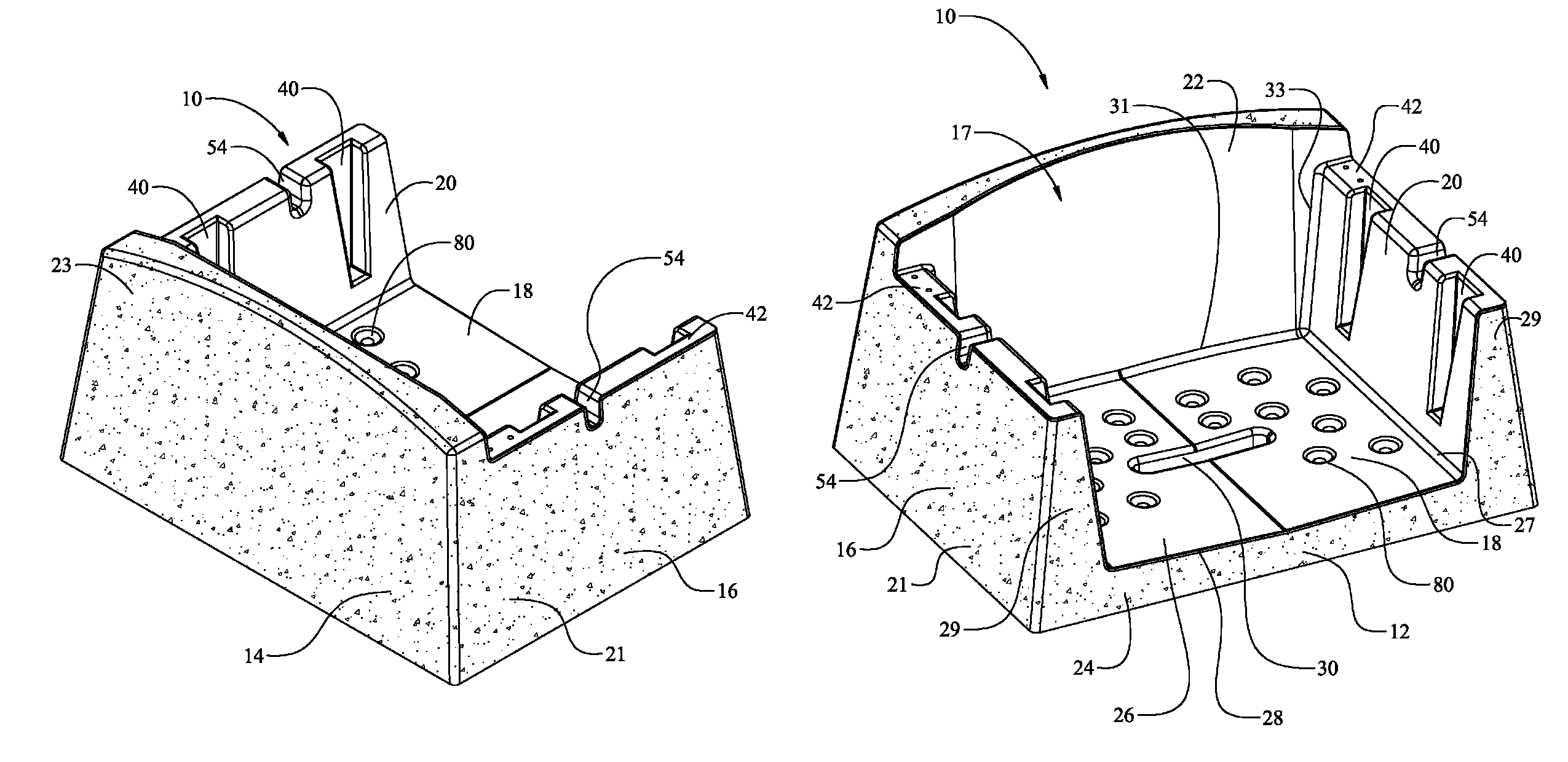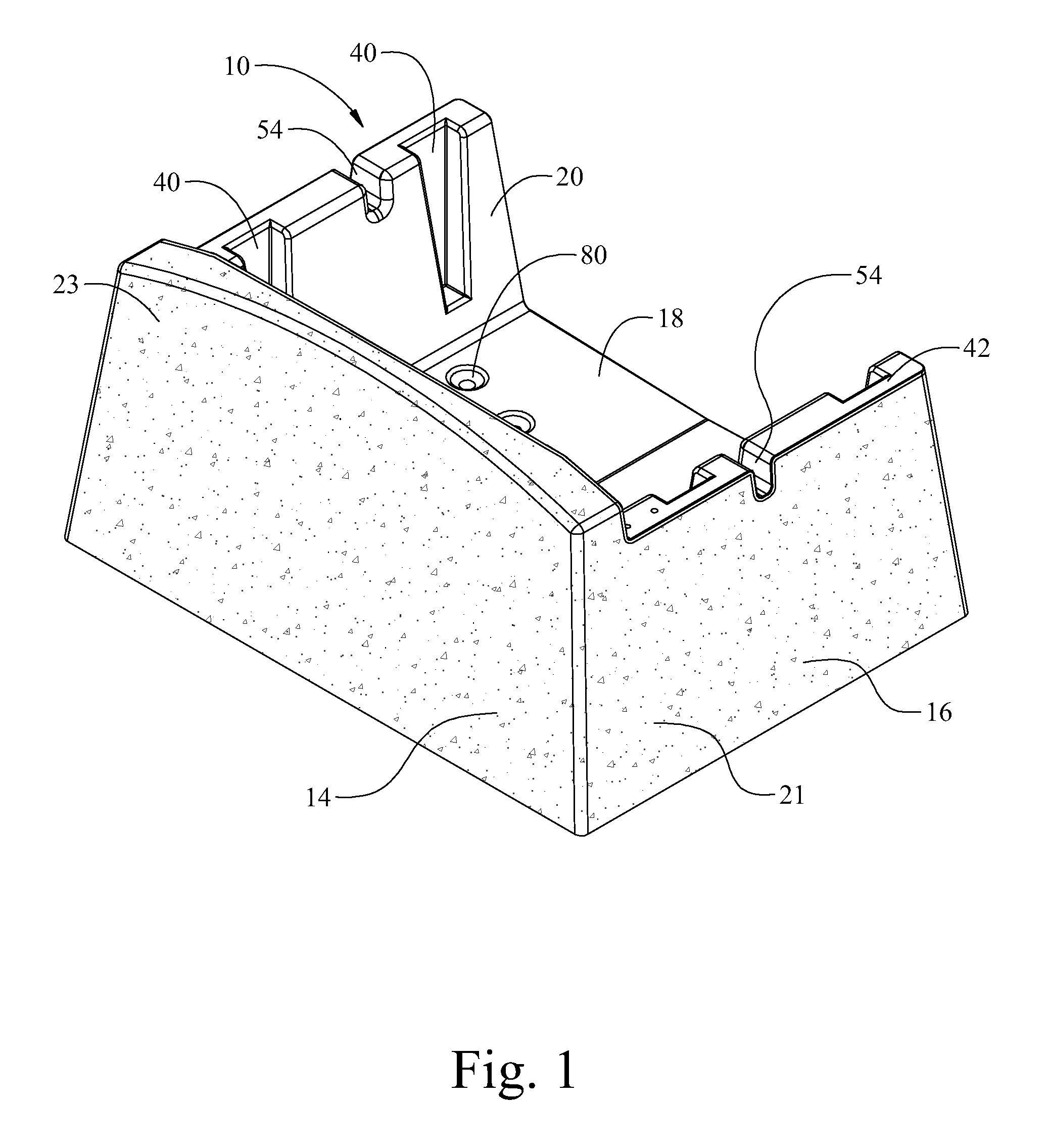Retaining wall system
a technology of retaining walls and walls, applied in the direction of excavation, artificial islands, foundation engineering, etc., can solve the problems of many blocks, heavy weight of relative small modules, and limited degree of setback they are capable of attaining, so as to simplify and optimize the casting and demolding process, light weight, and the effect of reducing weigh
- Summary
- Abstract
- Description
- Claims
- Application Information
AI Technical Summary
Benefits of technology
Problems solved by technology
Method used
Image
Examples
Embodiment Construction
[0063]FIGS. 1-9 illustrate one preferred embodiment of the building block of the present invention, generally indicated in its entirety by the reference numeral 10. In general, building block 10 comprises base 12, generally upright face wall 14 extending upward from the base, and two generally upright side walls 16 extending upward from the base and generally rearward of the face wall. Base 12 has an inner surface 18 and an outer surface 19, sidewalls 16 have an inner surface 20 and an outer surface 21, and face wall 14 has an inner surface 22 and an outer surface 23. Fill receiving cavity 17 (FIGS. 2 & 4) is defined by base inner surface 18, side wall inner surfaces 20 and face wall inner surface 22 and receives fill material such as earth, sand, aggregate, mulch and the like during construction of a retaining wall.
[0064]As shown in FIGS. 1-9, building block 10 does not possess a rear wall but it is to be understood that it may optionally include a rear wall extending upward from t...
PUM
| Property | Measurement | Unit |
|---|---|---|
| set back angles | aaaaa | aaaaa |
| β | aaaaa | aaaaa |
| β | aaaaa | aaaaa |
Abstract
Description
Claims
Application Information
 Login to View More
Login to View More - R&D
- Intellectual Property
- Life Sciences
- Materials
- Tech Scout
- Unparalleled Data Quality
- Higher Quality Content
- 60% Fewer Hallucinations
Browse by: Latest US Patents, China's latest patents, Technical Efficacy Thesaurus, Application Domain, Technology Topic, Popular Technical Reports.
© 2025 PatSnap. All rights reserved.Legal|Privacy policy|Modern Slavery Act Transparency Statement|Sitemap|About US| Contact US: help@patsnap.com



